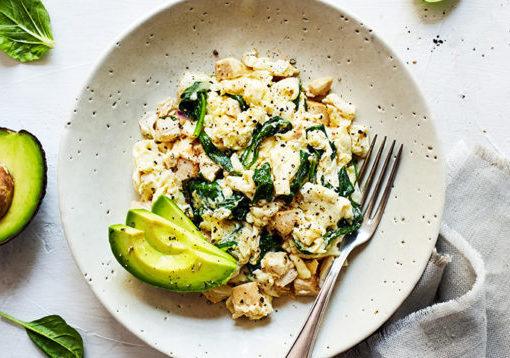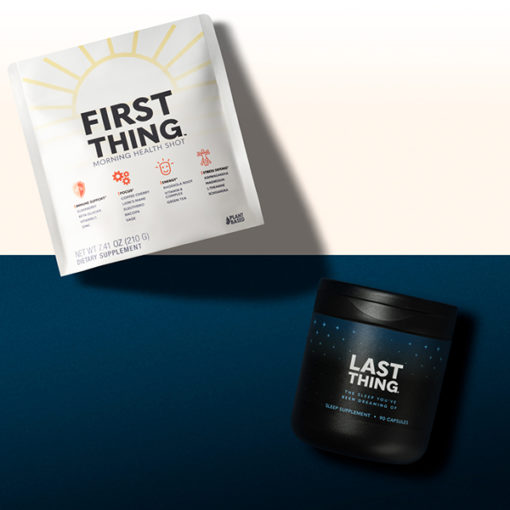
Eating healthy on a budget versus what you hear, “Healthy food is expensive.â€
It’s an excuse we’ve all heard (or told ourselves!), but cost more than what?
A gym membership that you never use? Juice cleanses? Packaged foods and fast food? Eating out every day?
Buying food any food can be expensive if you don’t plan ahead. But with a little creativity, you can fill your fridge and pantry with healthy, whole foods without breaking the bank!
1. Grow your own herbs and produce
We get it: It can get expensive filling your grocery cart with fresh fruit and veggies every week the costs can add up if you’re not strategic about the types of fresh produce you buy. (Hello, packaged greens that end up in the trash…unopened.)
Experiment with growing your own produce no matter where you live, as long as you have sunlight and water, you can grow your own herbs, veggies, and maybe even fruit!
Small herb plants and vegetable seeds generally cost less than $5 apiece, and a window box, patio, or fire escape can provide all the light and space you need to grow a few items.
Another option: Find a community garden and start your own plot, city farmers!
A good place to start is to do a search “[your city] community garden†in Google Maps. Or start your own community garden with a group of like-minded green thumbs.
2. Don’t Avoid Canned and Frozen Produce
Fresh fruits and vegetables are ideal but don’t forget about the freezer section when you go grocery shopping.
Canned and frozen produce are picked at their prime and either flash-frozen or heated/pasteurized and packaged immediately, so they can be just as healthy as their fresh counterparts.
Bonus? A frozen bag of spinach will last longer than a bag of fresh, which cuts down on food waste, which can mean more money in your wallet in the long run.
Studies on the nutritional value and cost-effectiveness of canned, frozen, and fresh produce have found that canned produce retains the similar nutritional value as fresh, and the heating process can make the fiber in canned foods more soluble, or usable, when digested.
Just make sure your bag of veggies is just veggies skip the ones that come with butter or sauces. Same goes for frozen fruit make sure there are no added sugars, just fruit.
3. Start Your Own Food-Sharing Cooperative
Pull together a few health-conscious pals or your neighbors and start a mini food-sharing co-op.
Here are some casual, low-stress ideas to get started:
- If someone has a Costco, Sam’s Club, or food-delivery membership, split the cost of the annual fee, and make a list of weekly or monthly items to buy and share. (Let’s be real: Do you really need a four-pack of two-liter cans of olive oil?)
- Go into together to share in a produce delivery service that’s budget- and eco-conscious. The U.S. is notorious for food waste and many “ugly†yet still nutritious produce get tossed because they don’t look perfect enough for market shelves. If you live on the West Coast or in Chicago, check out Imperfect Produce, and if you live on the East Coast, Hungry Harvest is a great option.
- Share the cost of monthly community-supported agriculture box (CSA). Look for meat CSA farmers in your area for local sources of farm-fresh and often pasture-raised meat, eggs, and dairy.
- If you’re a meat- and poultry-eater, there are meat-delivery services available, too. In addition to sharing the cost, you’ll have the ability to see how your meat and chicken is sourced.
4. Meal Prep
Preparing several meals ahead of time ensures that you have a ready-made healthy meal or snack ready when you’re hungry and encourages you to buy healthy foods in bulk and use them right away so you waste less.
Here are some simple ideas for getting into the budget-conscious meal-prep habit:
- “Learn how to cook one large batch of shredded chicken/pork or lentils/beans and transform them into two to three completely different meals,†suggests Lindsay Livingston, R.D., creator of the Lean Green Bean healthy recipe blog.
- Learn how to make Portion Fix-approved shredded chicken, beans, and lentils with these recipes: Slow Cooker Chicken Tacos, Rainbow Lentil Bowls, and Slow Cooker Refried Beans.
- Use a slow cooker or Instant Pot to make soups, stews, pulled meats, stewed fruit (delicious in overnight oats or mixed with plain oatmeal), beans, lentils, and ancient grains. Pro tip: Get beans and lentils from the bulk bins it’s cheaper than canned or already-cooked versions).
- Cook a dozen hard-boiled eggs on the weekend to use the next week as part of breakfast or a snack; add to salads or whole-grain bowls.
- Skip the pre-cut vegetables and fruits at the grocery store. They may be more convenient, but they’re also more expensive than doing the chopping yourself. Make sure you know how long you can store fresh vegetables and fruits so nothing goes to waste.
Pro tip: Get more meal prep tips here!
5. Portion Fix Your Diet
Think about it: How much money do you typically spend (and how much do you eat) when you go out for lunch every weekday? Or when you get take-out for dinner?
Enter Beachbody Portion Fix eating plan.
This portion-control plan may help you save money, in addition to helping you dial in your diet because you’ll be prepping more meals at home and eating less overall but eating more nutritious whole foods.
When you’re in tune with the actual portions you should be eating for better health and possibly weight loss, you might notice cost savings in the long-term.
The green and purple containers green for vegetables and purple for fruits are the largest of the six containers, which means the bulk of your calories will come from nutrient-dense, fiber-filled produce.
You’ll be cutting way back on things like most processed, packaged foods, condiments, prefab frozen foods, artificially or sugar-sweetened beverages, and those frou-frou coffee drinks.
These types of convenience foods might even cost more than the whole foods Portion Fix encourages and they can inconveniently impact your health and weight.
Pro tip: Learn how to make Portion Fix-approved recipes from start to finish with FIXATE, the cooking show hosted by Autumn Calabrese and her brother, Chef Bobby Calabrese.
The Bottom Line
With a few out-of-the-box solutions, you can eat healthy foods and save money at the same time.






